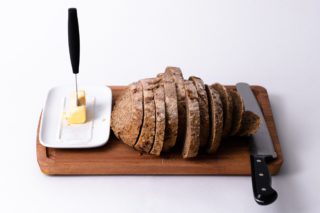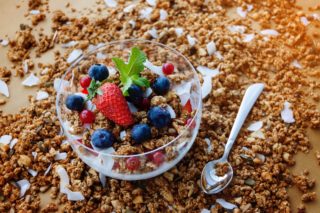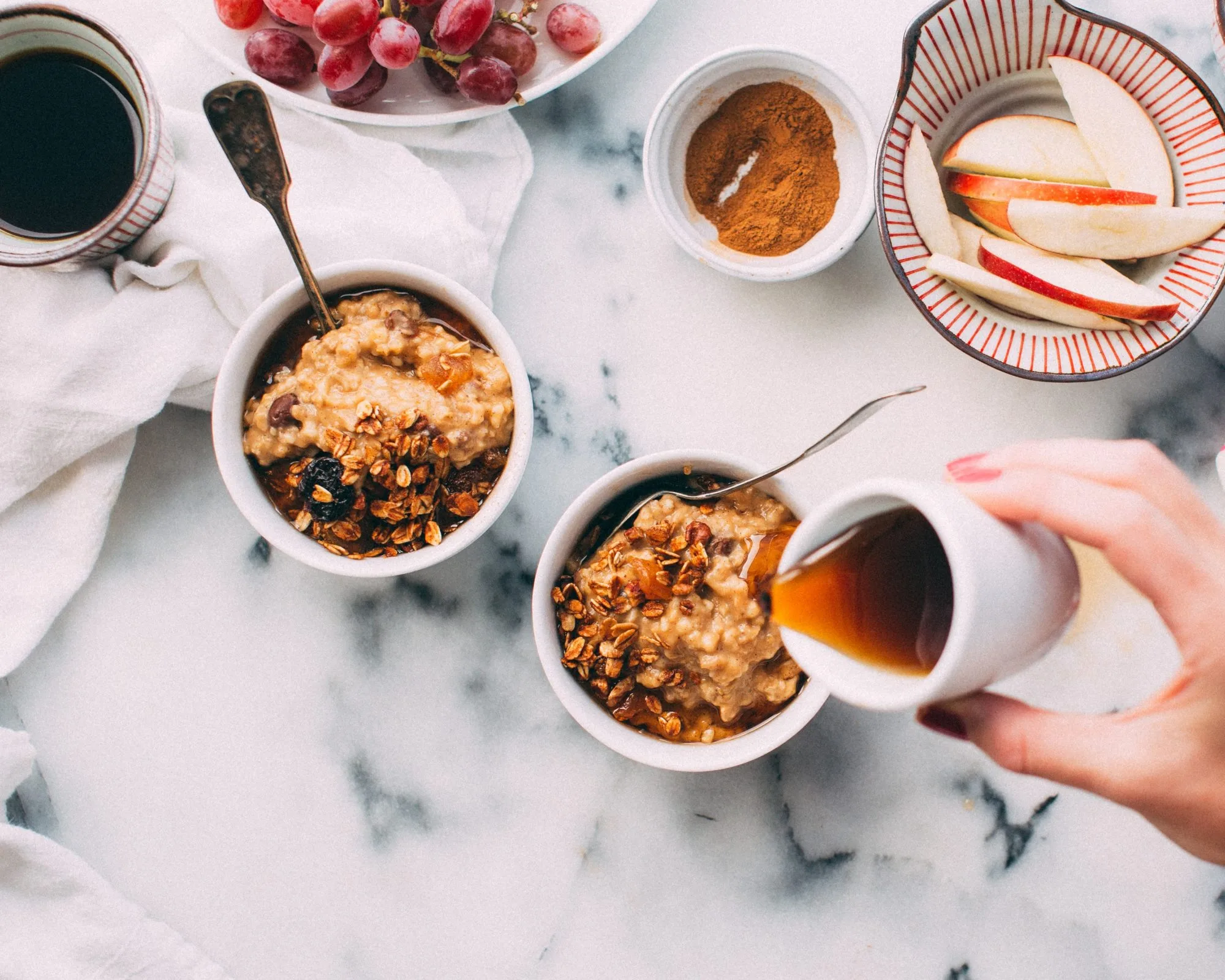Admit it, at the start of every January we each make some big proclamation about how we’re going to exercise more and eat healthier. Now while there’s nothing wrong with healthy eating, a lot of us find ourselves reaching for products with misleading labels. Believe it or not, foods that are fat-free or fruit-based aren’t necessarily what your 2020 diet needs.
Regardless of new year’s nutritional resolutions, consumers have become more health orientated when it comes to their food. As a result, companies have begun stockpiling shelves with low-fat foods in an effort to attract a more health-conscious audience. Before long, these foods soon become a favorite amongst consumers and are regularly featured in their diets. However, just because some foods appear healthy, that doesn’t mean that they are. In fact, most of the time, a lot of these kinds of foods have the same nutritional value as junk food.
That said, if you’re serious about consuming more foods with nutritional value in 2020, then you’ll need to stay clear of these “healthy” foods.
“Healthy” Food That’s Actually Unhealthy
1. ‘Low-Fat’ and ‘Fat-Free’ Foods
When it comes to the world of food, fat always seems to be the dirtiest word in nutrition. Unfortunately, fat in food is regularly vilified. This has resulted in the rapid growth of fat-free and low-fat food products.
As a result, food manufacturers have begun removing the fat from their food products – however, there’s a catch. Fat helps to add flavor to foods and removing it results in the food not tasting as pleasant. Thus, in an effort to address the issue of taste, manufacturers turn to added sugars. In fact, research published in the journal Nutrition and Diabetes found that low-fat/fat-free foods can contain up to 10% more calories and 40% more sugar.
Unfortunately, these added sugars have been linked to increasing the risk of metabolic syndrome, cardiovascular disease, and type 2 diabetes (1).
It’s important to remember that your body needs fat. Fat not only provides energy, but also plays a role in the absorption of vitamins and minerals, blood clotting, and muscle movement. That said, the preferred thing to do would be to consume ‘good fats’. These can be found in avocados, olive oil as well as nuts and seeds. Additionally, the only real fats you should be avoiding are ‘bad fats’ like trans fats (often listed as hydrogenated or partially hydrogenated) which are found in baked goods as well as fast food.
2. Salad Dressings

Photo by Chris Tweten on Unsplash
Salads are a healthy and nutritious meal, yet drizzling salad dressings all over them may not be the best way to go. Yes, salad dressings help to add flavor, but they can also ruin the nutritional value that the said salads provide.
Store-bought salad dressings are often rich in added and unhealthy ingredients like sugar, vegetable oils, and trans-fats. This also includes low-fat dressings as they are often loaded with added sugar and salt.
If you really want to add some flavor to your salad, look for drizzled extra virgin olive oil, raw apple cider vinegar, balsamic vinegar, or lemon juice.
3. Fruit Juices
Yes, fruit juices are made from fruit. However, fruit juices don’t necessarily contain real fruit – in fact, most rarely do.
According to findings published in the Lancet Journal, Diabetes and Endocrinology, fruit juices contain a similar amount of sugar as a soft drink. What’s more, some of these juices don’t even contain actual fruit – just additives that provide the taste of said fruit. Essentially, fruit juices provide none of the nutrients that you could get from eating a real piece of fruit. Instead, they provide you with a serving of sugar and calories.

Photo by Jude Infantini on Unsplash
That said, it’s better to spend your time peeling an orange than to sip on a glass of orange juice.
4. Margarine
Butter is a dairy product, made from milk or cream, and it’s also quite high in saturated fat. As a result of its saturated fat content, a lot of health experts turned to promote margarine, an oil-based product made from vegetable oil and water, as a healthier option.
However, it’s made from vegetable oil so how much healthier can it be? In fact, a study published in the journal Epidemiology revealed that people who replace butter with margarine face a higher risk of dying from heart disease.
Therefore, margarine should not be on any part of your grocery list. Yes, butter is rich in saturated fat, but this just means that it needs to be enjoyed in moderation, and it’s preferable to opt for grass-fed butter or ghee.
5. Gluten-Free foods
Hear this now: gluten is not the enemy, and there’s no reason as to why we should be actively trying to avoid it – unless one has an intolerance to it, or they’re battling with celiac disease.
However, as with a number of food trends, food manufacturers have jumped on the gluten-free bandwagon and introduced all sorts of gluten-free foods to the market, aiming it at consumers who truly believe that said foods are healthier. This is far from true.
At the end of the day, gluten-free foods are still highly processed and the one fact of processed foods is that they are rich in sugars, yet low in essential nutrients. In fact, a lot of gluten-free foods use refined starches to replace wheat flour, and these starches do nothing but spike your blood sugar levels. If you’re battling with an intolerance to gluten, then the best way to go gluten-free would be by avoiding gluten-free processed foods and increasing your intake of naturally gluten-free foods like fruits and vegetables.
6. Pretzels
Yes, they’re often a go-to snack at the office, and they’re much healthier than chips, right? Wrong.
Pretzels provide zero nutritional, and they’re simply high in calories, salt as well as white flour – which serves to spike your blood sugar, increasing your risk of insulin resistance and causing you to want to eat more.
If you’re craving something salty as a snack, nothing beats nuts as the ultimate snack food. They’re rich in omega-3 fatty acids, as well as other essential nutrients that help to keep you healthy.
7. Veggie Chips
Just because it’s made from a vegetable, doesn’t mean it’s healthy.
Veggie chips are in fact vegetables that have been cut down and heavily layered with oil, salt, artificial colors, and flavorings – all of which provide the illusion of a healthy veggie chip. In reality, the process that veggie chips go through removes all the essential nutrients, and it leaves an unhealthy snack that will do more harm than good.
If you’re really craving vegetables, it’s better to eat them raw.
8. Granola products
Yes, granola is made from rolled oats and honey which helps to provide the body with a healthy dose of essential nutrients, such as fiber. However, this doesn’t mean that granola products are what your body needs.

Photo by Ovidiu Creanga on Unsplash
Unfortunately, a lot of the granola products found on shelves are packed with sugar, extra calories, salt, and other not-so-healthy ingredients. At the end of the day, if you really want to enjoy a serving of granola, it’s better to create your own homemade granola.
9. Diet sodas
You may think it’s better than drinking the real thing, but diet sodas are just as bad as regular sodas.
This is because diet sodas are ridiculously rich in artificial sweeteners, preservatives, and artificial flavors. What’s more, diet sodas have been found to increase one’s risk of obesity, diabetes, and heart disease (2,3,4).
As they provide no nutritional value, it’s better to protect your health and cut back on your consumption of diet sodas.
The bottom line
If you really want to keep on top of the ‘healthy’ food that you consume, it’s important to be tricked into purchasing something just because the front label proclaims it as healthy. Rather, get into the habit of reading and understanding the ingredient list. Additionally, you can also do your best to always choose whole foods over anything fried or processed.
References
Fowler, S.,Williams, K., Hazuda, H. (2015). Diet Soda Intake Is Associated with Long-Term Increases in Waist Circumference in a Biethnic Cohort of Older Adults: The San Antonio Longitudinal Study of Aging. Journal of the American Geriatrics Society. 63. 10.1111/jgs.13376.
Imamura F., O’Connor L., Ye Z., et al, (2015), Consumption of sugar sweetened beverages, artificially sweetened beverages, and fruit juice and incidence of type 2 diabetes: systematic review, meta-analysis, and estimation of population attributable fraction BMJ; 351 :h3576
Gardener, H., Rundek, T., Markert, M. et al.(2012), J GEN INTERN MED 27: 1120. https://doi.org/10.1007/s11606-011-1968-2
Gill, J., Sattar, N. (2014). Fruit juice: Just another sugary drink?. The lancet. Diabetes & endocrinology. 2. 10.1016/S2213-8587(14)70013-0.
Nguyen, P. K., Lin, S., & Heidenreich, P. (2016). A systematic comparison of sugar content in low-fat vs regular versions of food. Nutrition & diabetes, 6(1), e193. doi:10.1038/nutd.2015.43
Stanhope, K., Schwarz, J., Havel, P. (2013). Adverse metabolic effects of dietary fructose. Current opinion in lipidology. 24. 10.1097/MOL.0b013e3283613bca.





![women [longevity live]](https://longevitylive.com/wp-content/uploads/2020/01/photo-of-women-walking-down-the-street-1116984-100x100.jpg)










2 Comments